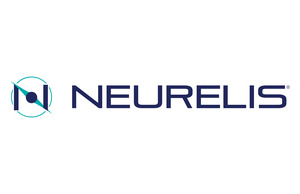
Phase 1 clinical study data on NRL-1049 shows dose-proportional increase in exposure and favorable safety profile
SAN DIEGO, Nov. 6, 2025 /PRNewswire/ -- Neurelis, Inc., today announced it will present at the Alliance to Cure Cavernous Malformation (CCM) 21st International CCM Scientific & Clinical Meeting to be held November 6-7, 2025, in Atlanta, Georgia. The poster presentation will highlight data from the Phase 1 study of NRL-1049, an investigational new chemical entity Rho kinase (ROCK) inhibitor for the treatment of cerebral cavernous malformation. CCM is a rare vascular disease characterized by clusters of abnormally enlarged, thin-walled capillaries, primarily in the brain and spinal cord, that are prone to leakage and hemorrhage, potentially leading to a debilitating lifelong condition.
"The annual CCM meeting is an important gathering of researchers, clinicians, and patients, all sharing a common mission to help advance treatment and improve care for people with CCM," said Adrian L. Rabinowicz, MD, Neurelis Chief Medical Officer. "Our participation in the annual CCM meeting is particularly meaningful this year as it is the first we are sharing data at the meeting. We look forward to engaging with the CCM community on the latest developments to address this devastating disease."
About one in 500 people are affected by CCMs, and patients may experience a wide range of clinical symptoms ranging from headaches to focal neurological deficits, seizures, and cerebral hemorrhage. The probability of intracerebral hemorrhage on CCM lesions, particularly if they bled before, is considerable, increasing the risk of morbidity and mortality with each hemorrhagic event. Familial, or hereditary, CCMs account for about 20% of all CCM cases.
The Company's poster titled "A Phase 1, First-in-Human, Single-Ascending Dose Study to Assess Safety, Tolerability, and Pharmacokinetics of a ROCK inhibitor (NRL-1049) in Healthy Volunteers" presents clinical data from healthy adult participants who received NRL-1049. This study identified 150-mg as the maximum tolerated dose, which demonstrated a favorable safety profile. Pharmacokinetic analyses showed that exposure to NRL-1049 and its active metabolite, NRL-2017, increased in a dose-proportional or greater-than-dose proportional manner. Together the study results support continued investigation and clinical development of NRL-1049.
The poster will be presented on Thursday, November 6th from 4-5:30 PM ET.
About Neurelis
Neurelis, Inc., is a neuroscience company focused on the development and commercialization of therapeutics for the treatment of epilepsy and neurologic disorders characterized by high unmet medical need. The FDA has approved Neurelis' VALTOCO® (diazepam nasal spray) as an acute treatment of intermittent, stereotypic episodes of frequent seizure activity (i.e., seizure clusters, acute repetitive seizures) that are distinct from an individual's usual seizure pattern in adult and pediatric patients 2 years of age and older. VALTOCO is a proprietary formulation of diazepam incorporating the science of INTRAVAIL®, a transmucosal absorption enhancement technology that enables the noninvasive delivery of a broad range of protein, peptide, and small-molecule drugs. For more information on VALTOCO, please visit www.valtoco.com. For the latest scientific information on VALTOCO, please visit http://www.neurelismedicalaffairs.com/. Neurelis is also developing NRL-1004, an investigational, Phase 1 stage intranasal olanzapine for treatment of acute agitation episodes associated with schizophrenia and bipolar disorder. In addition, Neurelis is also developing NRL-1049 (previously known as BA-1049), an investigational, Phase 1 new chemical entity Rho kinase (ROCK) inhibitor, for the treatment of cerebral cavernous malformations (CCMS), a rare disorder of the central nervous system (CNS). For more information on Neurelis, please visit www.neurelis.com.
Important Safety Information about VALTOCO:
Indication
VALTOCO® (diazepam nasal spray) is indicated for the acute treatment of intermittent, stereotypic episodes of frequent seizure activity (i.e., seizure clusters, acute repetitive seizures) that are distinct from a patient's usual seizure pattern in patients with epilepsy 2 years of age and older.
WARNING: RISKS FROM CONCOMITANT USE WITH OPIOIDS; ABUSE, MISUSE, AND ADDICTION; and DEPENDENCE AND WITHDRAWAL REACTIONS
- Concomitant use of benzodiazepines and opioids may result in profound sedation, respiratory depression, coma, and death. Reserve concomitant prescribing of these drugs for patients for whom alternative treatment options are inadequate. Limit dosages and durations to the minimum required. Follow patients for signs and symptoms of respiratory depression and sedation.
- The use of benzodiazepines, including VALTOCO, exposes users to risks of abuse, misuse, and addiction, which can lead to overdose or death. Abuse and misuse of benzodiazepines commonly involve concomitant use of other medications, alcohol, and/or illicit substances, which is associated with an increased frequency of serious adverse outcomes. Before prescribing VALTOCO and throughout treatment, assess each patient's risk for abuse, misuse, and addiction.
- The continued use of benzodiazepines may lead to clinically significant physical dependence. The risks of dependence and withdrawal increase with longer treatment duration and higher daily dose. Although VALTOCO is indicated only for intermittent use, if used more frequently than recommended, abrupt discontinuation or rapid dosage reduction of VALTOCO may precipitate acute withdrawal reactions, which can be life-threatening. For patients using VALTOCO more frequently than recommended, to reduce the risk of withdrawal reactions, use a gradual taper to discontinue VALTOCO.
Contraindications: VALTOCO is contraindicated in patients with:
- Hypersensitivity to diazepam
- Acute narrow-angle glaucoma
Central Nervous System (CNS) Depression
Benzodiazepines, including VALTOCO, may produce CNS depression. Caution patients against engaging in hazardous activities requiring mental alertness, such as operating machinery, driving a motor vehicle, or riding a bicycle, until the effects of the drug, such as drowsiness, have subsided, and as their medical condition permits.
The potential for a synergistic CNS-depressant effect when VALTOCO is used with alcohol or other CNS depressants must be considered, and appropriate recommendations made to the patient and/or care partner.
Suicidal Behavior and Ideation
Antiepileptic drugs (AEDs), including VALTOCO, increase the risk of suicidal ideation and behavior. Patients treated with any AED for any indication should be monitored for the emergence or worsening of depression, suicidal thoughts or behavior, and/or unusual changes in mood or behavior.
Glaucoma
Benzodiazepines, including VALTOCO, can increase intraocular pressure in patients with glaucoma. VALTOCO may only be used in patients with open-angle glaucoma only if they are receiving appropriate therapy. VALTOCO is contraindicated in patients with narrow-angle glaucoma.
Neonatal Sedation and Withdrawal Syndrome
Use of VALTOCO late in pregnancy can result in sedation (respiratory depression, lethargy, hypotonia) and/or withdrawal symptoms (hyperreflexia, irritability, restlessness, tremors, inconsolable crying, and feeding difficulties) in the neonate. Monitor neonates exposed to VALTOCO during pregnancy or labor for signs of sedation and monitor neonates exposed to VALTOCO during pregnancy for signs of withdrawal; manage these neonates accordingly.
Risk of Serious Adverse Reactions in Infants due to Benzyl Alcohol Preservative
VALTOCO is not approved for use in neonates or infants. Serious and fatal adverse reactions, including "gasping syndrome," can occur in neonates and low-birth-weight infants treated with benzyl alcohol–preserved drugs, including VALTOCO. The "gasping syndrome" is characterized by central nervous system depression, metabolic acidosis, and gasping respirations. The minimum amount of benzyl alcohol at which serious adverse reactions may occur is not known.
Adverse Reactions
The most common adverse reactions (at least 4%) were somnolence, headache, and nasal discomfort.
Diazepam, the active ingredient in VALTOCO, is a Schedule IV controlled substance.
To report SUSPECTED ADVERSE REACTIONS, contact Neurelis, Inc. at 1-866-696-3873 or FDA at 1-800-FDA-1088 (www.fda.gov/medwatch).
Please read full Prescribing Information , including Boxed Warning.
Contacts:
Brittany Bradrick, Chief Operating Officer and Chief Financial Officer, +1 858 251 2100
SOURCE Neurelis, Inc.







Share this article